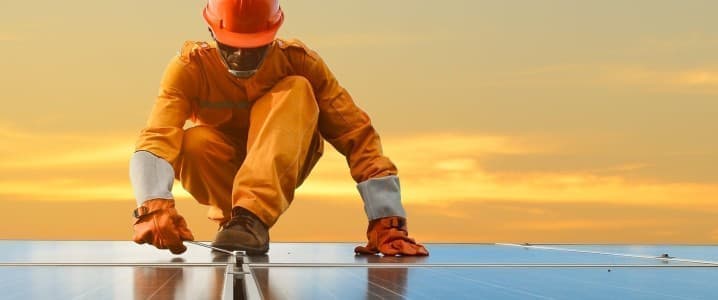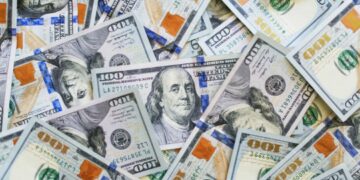Wall Street’s Hottest Clean-Energy Bet Hits a Ceiling
A couple of years ago, a cross-section of Wall Street was highly bullish on the community solar sector, with some predicting that it was poised to become the most prevalent model of residential solar power distribution in the United States. First unveiled about two decades ago, community solar entails a small-scale solar model wherein customers purchase shares in a new solar farm in their service area, developers build the project then subscribers receive credits that cut their utility bills by ~10%. Community solar offers a viable solution to the roughly half of American households that are unable to install rooftop solar due to factors like roof shading, issues with property ownership or specific regulations. Further, these solar projects tend to offer friendlier contract terms for people with lower credit scores.
Unfortunately, the community solar boom could be over before it has even properly begun. A fresh report by global data, research, and consulting services provider, WoodMackenzie, has revealed that U.S. community solar installations dropped 36% year over year in the first half of the current year, with just 437 MW installed, thanks to Trump’s One Big Beautiful Bill Act. OBBBA gutted key tax incentives for clean energy projects, with the bill’s impact expected to get worse as the years roll on. WoodMac is now decidedly bearish on the sector, and expects community solar installations to contract 12% annually through 2030. Total U.S. community solar installations clocked in at 9.1 GW at the end of June 2025, and are projected to exceed 16 GW by 2030. Wood Mackenzie does not see much upside in the sector, and has predicted that installations could exceed the forecast figure by 1.3 GW on favorable state policy while further tax credit complications could lower the outlook by 1.2 GW.
“The final bill offers a crucial four-year window for projects already under development to come online and secure the Investment Tax Credit (ITC), supporting near-term buildout,” Caitlin Connelly, senior analyst at Wood Mackenzie, told PV Magazine. “As of mid-2025, there are over 9 GW of community solar projects under development, with over 1.4 GW known to be under construction,” she added.
Wood Mackenzie has attributed this year’s big decline to falling volumes in New York and in Maine, after the former program was recently overhauled. New York alone is expected to contribute nearly 30% of the U.S. decline in community solar installations in 2025. The analysts have noted that Massachusetts, Maryland and New Jersey are also facing similar problems as they transition between program iterations, adding that multiple states have generally struggled to pass new legislation.
Solar Stocks Shine
Nevertheless, solar stocks have been defying the bearish sentiment pervading the clean energy sector. Back in July, U.S. President Donald Trump signed into law ‘One Big Beautiful Bill Act’, rolling back many clean energy credits enacted by former President Joe Biden under the Inflation Reduction Act (IRA) of 2022. As widely expected, OBBBA is far from beautiful for various industries within the solar and wind energy sectors. However, the solar sector has continued to outperform, thanks in large part to robust U.S. and global solar demand as well as specific provisions within the OBBBA that favor solar manufacturing in the United States. The solar sector’s favorite benchmark, Invesco Solar ETF (NYSEARCA:TAN), has comfortably outpaced its oil and gas peers, returning 40.5% in the year-to-date compared to 4.2% return by the oil and gas benchmark, the Energy Select Sector SPDR Fund (NYSEARCA:XLE), and 14.8% gain by the S&P 500.
OBBBA favors solar manufacturing through provisions that incentivize domestic production and streamline the tax credit process, while also setting deadlines for construction and placement in service of solar projects. Specifically, it maintains and clarifies the tax credits for solar projects under Sections 48E and 45Y, while also phasing them out for wind and solar projects placed in service after December 31, 2027, unless construction began within 12 months of the Act’s enactment.
First Solar (NASDAQ:FSLR) is one of the companies heavily favored by OBBBA, with the stock up 33.6% YTD. UBS recently reiterated its Buy rating and hiked its price target on FSLR to $275 from $255, saying the company will receive a significant boost to the bottomline from OBBBA credits. According to UBS, the present value of 45X tax credits for the company is worth $75 per share, while the company is expected to grow net cash to $25 per share by the second quarter of 2026. UBS says its PT is conservative, pointing out that it did not factor in extra earnings when First Solar’s finishing factory comes online. First Solar’s 3.5 GW per year manufacturing facility in Louisiana is expected to be commissioned in the second half of 2025. This facility is part of First Solar’s broader strategy to scale its American manufacturing footprint to over 10 gigawatts (GW) by 2025, according to Made in Alabama. The Louisiana factory, along with a new facility in Alabama, is are key component of this expansion.
Israel-based SolarEdge (NASDAQ: SEDG) leads the sector with YTD returns of 172.4%. Regarding regulatory changes under OBBBA, SolarEdge CEO Shuki Nir says the company’s multi-year strategy of onshoring manufacturing to the U.S. will help it preserve 45X advanced manufacturing credits over the next 7 years.
Meanwhile, some residential solar companies are also defying bearish projections. California-based residential solar company Sunrun (NASDAQ:RUN) has surged 107.8% YTD thanks to the company’s robust cost efficiencies as well as a record 70% storage attachment rate in its latest quarter. Sunrun installed a record 392 MWh of storage capacity during the second quarter, good for a 48% Y/Y increase, while solar capacity installations clocked in at 227 MW, up 18% Y/Y. Meanwhile, subscriber additions grew 15%, bringing the company’s total subscribers to 941,701 as of June 30.








